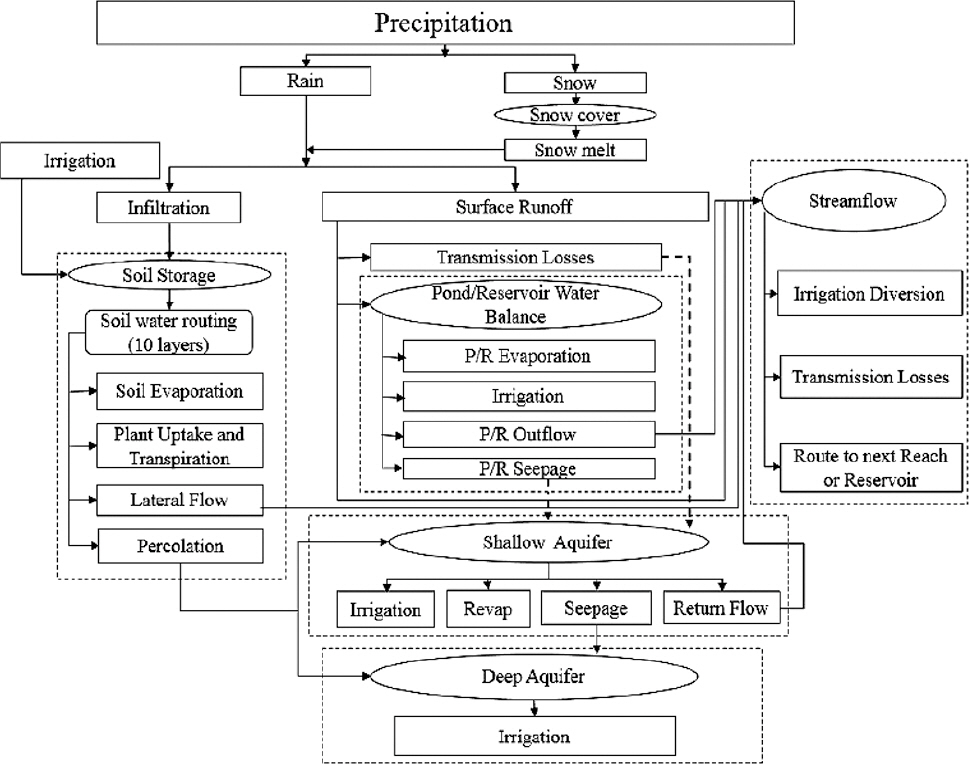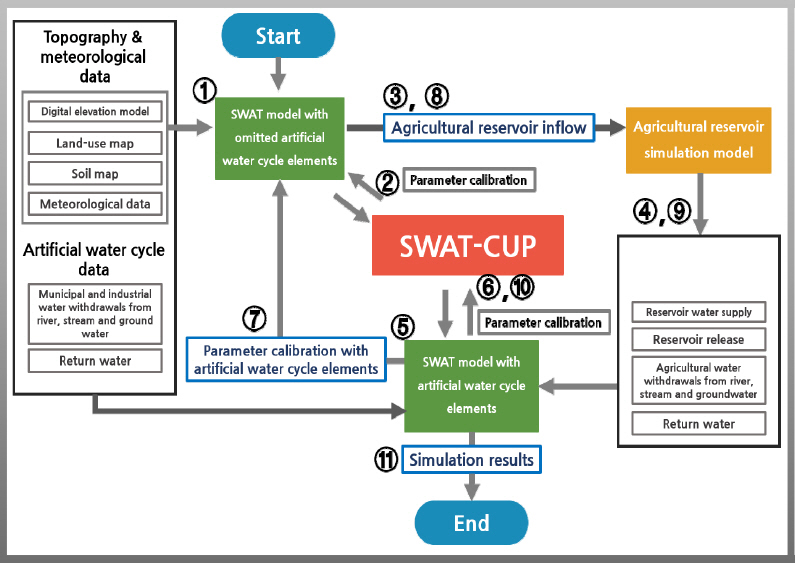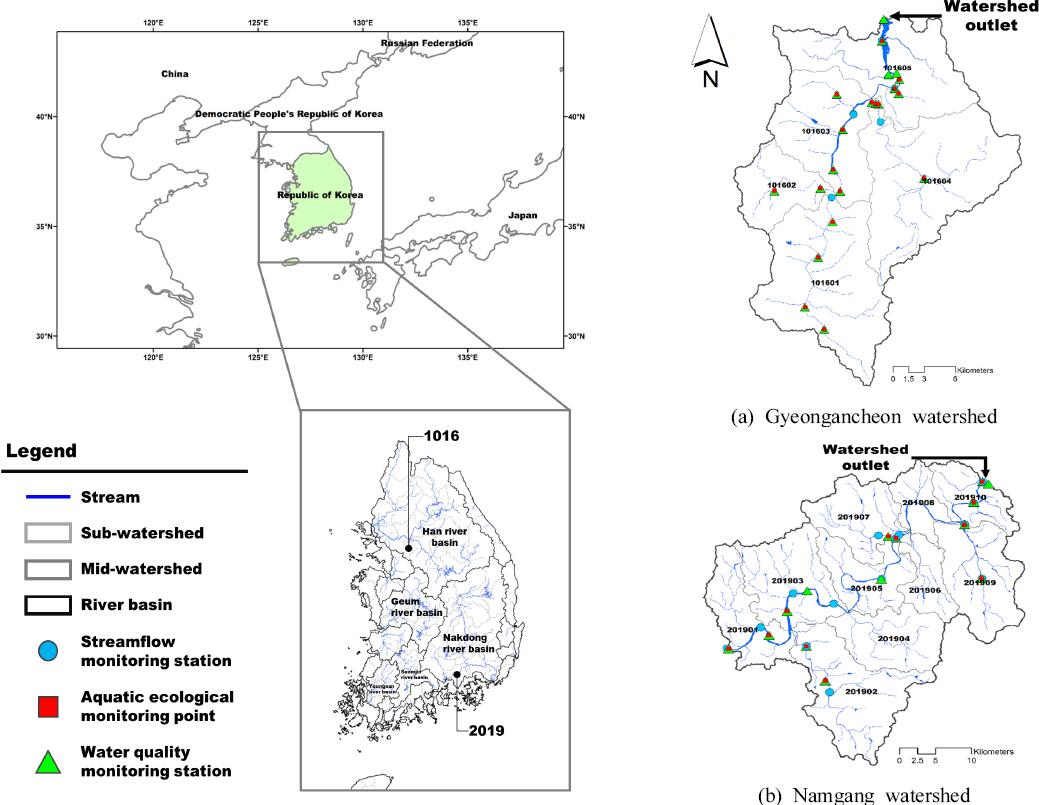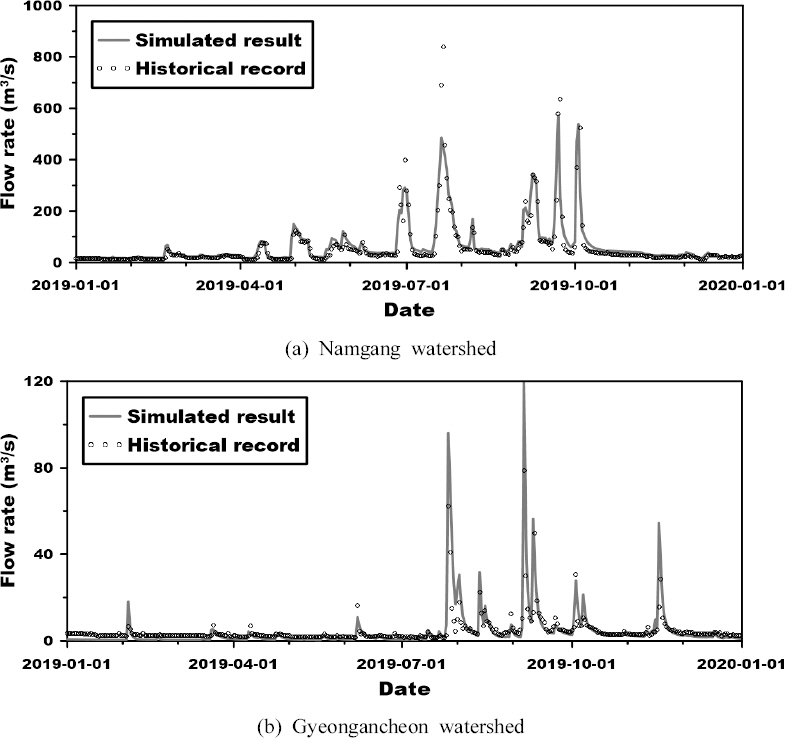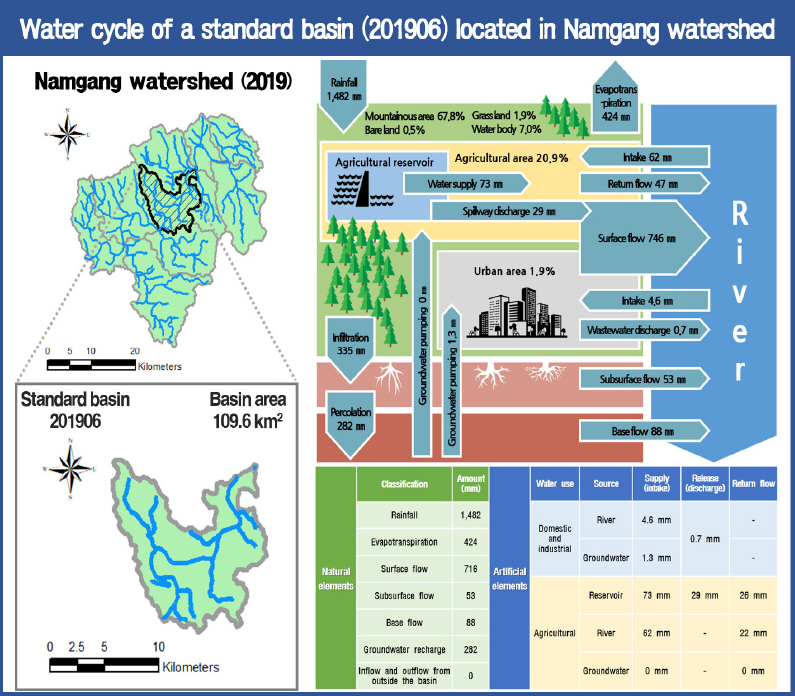1. Ahn, S.R, Lee, J.W, Jang, S.S, and Kim, S.J (2016) Large scale SWAT watershed modeling considering multi- purpose dams and multi-function weirs operation - For namhan river basin -.
Joural of the Korean Society of Agricultural Engineering, Vol. 85, No. 4, pp. 21-35.

2. Ahn, S.R, Park, G.A, Jan g, C.H, and Kim, S.J (2013) Assessment of climate change impact on evapotranspiration and soil moisture in a mixed forest catchment using spatially calibrated SWAT model.
Journal of Korea water resources Association, Vol. 46, No. 6, pp. 569-583.

3. Arnold, J.G, Moriasi, D.N, Gassman, P.W, Abbaspour, K.C, White, M.J, and Srinivasan, R (2012) SWAT:model use, calibration, and validation.
Transactions of the ASABE, Vol. 55, No. 4, pp. 1491-1508.

4. Chung, G, Ohk, W.S, Yoo, D.G, Kim, G, and Jeon, H (2022) Development and application of an integrated urban water cycle system by combining water cycle elements.
Journal of Korean Society Hazard Mitigation, Vol. 22, No. 6, pp. 311-319.


5. Gwon, Y, Son, K, Lee, K, and Choi, G (2020) Development and utility evaluation of a multi-composite water balance model.
Journal of Korean Society and Hazard Mitigation, Vol. 20, No. 2, pp. 239-250.


6. Jeon, J.Y, Jun, S.M, and Jang, Y (2019) The improvement of water cycle analysis system in urban watershed - Focused on Hyoja-dong in Seoul.
Crisisonomy, Vol. 19, No. 2, pp. 79-92.

7. Jeong, T.M (2021) Parameter estimation of the SWAT model by the SWAT-CUP and monthly inflow prediction of Andong reservoir using the ensemble streamflow prediction. Master's thesis, Pukyong National University, Korea.
8. Jung, J.S, Jung, K.W, Kang, S, and Hyun, K.H (2018) Evaluation of water cycle improvement in LH institute using SWMM-LID mode. Journal of Korean Society on Water Environment, Vol. 34, No. 3, pp. 308-315.
9. Kang, T (2013) Embedding an adaptive penalty function in the SCE-UA and its application to parameter estimation of a watershed runoff simulation model. Ph. D. dissertation, Pukyong National University.
10. Kang, T, Lee, S, and Lee, S (2018) Analysis on the integrated effects of stormwater management and economic benefits in an urban area using low impact development techniques.
Desalination and Water Treatment, Vol. 133, pp. 28-36.

11. Kim, H.J, Jang, C.H, and Noh, S.J (2012) Development and application of the catchment hydrologic cycle assessment tool considering urbanization (I) - Model development -.
Journal of Korea water resources Association, Vol. 45, No. 2, pp. 203-215.

12. Kim, H.J, Jang, C.H, Noh, S.J, and Cho, H.B (2007) Development of technical guidelines for hydrologic cycle in urban catchment. 2007 conference of Korea Water Resources Association, pp. 1630-1634.
13. Kim, H.Y, Nam, W.H, Mun, Y.S, Shin, J.H, and Yang, M.H (2022) Assessment of Water Cycle in Agricultural Watershed Based on Canal Network Modeling.
Journal of Korean Society and Hazard Mitigation, Vol. 22, No. 1, pp. 33-43.


14. Kim, Y.R, Hwang, S.H, and Lee, S.O (2015) Analysis for water cycle change using SWAT model and water balance analysis depending on water reuse in urban area.
Journal of the Water and Wastewater, Vol. 29, No. 4, pp. 447-457.

15. Korea Institute of Construction Technology (KICT) (2003) Development of watershed assessment techniques for healthy water cycle.
16. K-water (2022) Establishment and Application of Evaluation Framework for Hydrologic Cycle Quantification and Soundness.
17. Lee, H, and Kim, Y (2022) Evaluating water cycle urban planning based on green Infrastructure system using geodesign framework. Journal of the Urban Design Institute of Korea, Urban Design Institute of Korea, Vol. 23, No. 4, pp. 109-127.
18. Lee, J.M, and Kim, J.L (2012) The urban water cycle planning elements and hydrologic cycle simulation for green city.
LHI Journal, Vol. 3, No. 3, pp. 271-278.

19. Lee, J, Lee, Y.S, and Choi, J (2014) Analysis of water cycle effect according to application of LID techniques.
Journal of Wetlands Research, Vol. 16, No. 3, pp. 411-421.

20. Lee, N.J, Kang, T.U, Jin, Y.K, and Lee, S.H (2023) A proposal of assessment method for soundness of hydrologic cycle in watershed. Journal of Korea Academia-Industrial cooperation Society, pp. 998-1001.
21. Lee, S.J, Kim, Y.o, Lee, S.H, and Lee, K.S (2005) Water cycle simulation for the Dorimcheon catchment using WEP model.
Journal of Korea water resources Association, Vol. 38, No. 6, pp. 449-460.

22. Lee, Y.J, Park, M.J, Park, K.W, and Kim, S.J (2008) Analysis of hydrologic behavior Including agrcultural reservoir operation using SWAT model. Jouranl of the Korean Geographic Information Society, Vol. 11, No. 1, pp. 20-30.
23. Neitsch, S, Arnold, K, and Williams, K (2011). Soil &Water Assessment Tool Theoretical Documentation Version 2009. Texas Water Resources Institute, TX, USA.
24. Noh, S.J, Kim, H.J, Jang, C.H, and Hong, I.P (2004) Effects of urban impervious ratio on the water cycle in the Cheonggyecheon watershed. 2004 conference of Korean Society of Civil Engineers, pp. 2161-2166.
25. Park, J.Y, Lee, Y.J, and Kim, S.J (2008) The analysis of future land use change impact on hydrology and water quality using SWAT model. Journal of Korean Society of Civil Engineers, Vol. 28, No. 2B, pp. 187-197.
26. Park, J.Y, Lim, H.M, Lee, H.I, Yoon, Y.H, Oh, H.J, and Kim, W.J (2013) Water balance and pollutant load analyzes according to LID techniques for a town development.
Journal of Korean Society of Environmental Engineers, Vol. 35, No. 11, pp. 795-802.

27. Presidential Water Commission (2021) 1st Master Plan for National Water Management. Water Commission Support Department, Korea.
28. Shin, H.S, and Kang, D.K (2006) The study of the influence on long term streamflow caused by artificial storage facilities based on SWAT modeling process.
Journal of Korea Water Resources Association, Vol. 39, No. 3, pp. 227-240.

29. Shin, M.J, Chung, E.S, and Lee, K.S (2005) Characteristics of the hydrologic cycle during the non-flood period in upstream region of the Anyangcheon watershed using swat model. 2005 conference of Korean Society of Civil Engineers, pp. 1318-1321.
30. The Office of Parliamentary Counsel (2021). Water Act 2007. Agriculture, Water and the Environment, Australia.
31. Vieux, B.E (2001). Distributed hydrological modeling using GIS. Netherlands: Dordrecht, Kluwer Academic Publishers.




